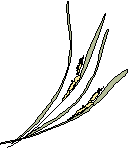

The History of Rice Paper
The Secret of Rice Paper
It is not hard to imitate rice paper. You can find its ingredients as long as you have a sample in your hand; its production process is imaginable. Numerous imitations have succeeded in its appearance, but none of them have ever achieved a quality that comparable to the paper made in Xuancheng, the birth place of rice paper.
How rice paper being made has been kept secret for centuries by its makers. Starting from the 19th century, the paper attracted attention of many curious folk. In 1877 an English custom officer at Wuhu Native Customs paid a visit to Xuancheng. Later in his annual report to Sir Robert Hart, the inspector-general of customs, he wrote “There are many paper mills run by villagers along the hill about eight miles northwest of the county. The villagers use the bark of wingceltis and mulberry and straw of rice for their paper. The fiber material is repeatedly washed in water before boiled in hot lime. The boiled material is then washed again and laid on the hillside for years until it is completely bleached.” In 1883 a Japanese disguised as chinese explored the region and wrote about it in Diary of Papermaking of Qing Dynasty, which was published later in Chinese Papermaking Industry Magazine in Tokyo, 1934. During World War II Japanese collected seeds of wingceltis and planted them in Japan. However, the bark from those transplanted trees only produced a weak paper.
Some people guess that the secret of rice paper is the chemicals in local water source; others believe that a peculiar rice from local sandy paddy-field contributes to the quality of the paper. It is true that particular environment produces particular things.

Home | Contact | Rice Paper